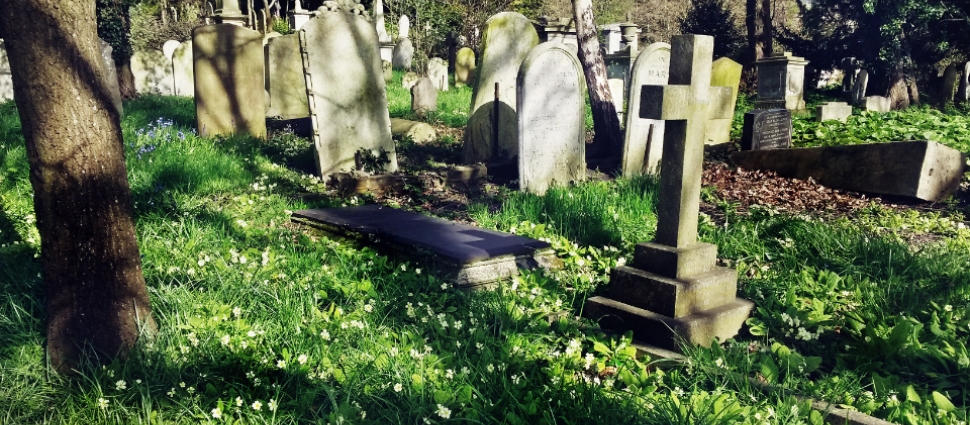Humiliation & Exaltation: Christ's Burial

Following his death on the cross, Scripture affirms that Jesus was buried. All four Gospels included an account of his burial,[1] and it is mentioned in both the Apostles’ and Nicene Creeds. But why is this fact included in every Gospel and in brief summaries like the early catholic creeds? What makes the burial such a significant part of our redeemer’s estate of humiliation?
When we compare the Gospel accounts, a number of features stand out. First, Pilate, who ordered Jesus’ execution, directs his soldiers to careful inspect and confirm that Jesus is dead before taking him down from the cross and entrusting his corpse to a sympathetic member of the Sanhedrin. The process of burial confirms the reality of Jesus’ death. Second, Mark relates Pilate’s surprise at how quickly Christ died, reinforcing the theological perspective that he was in control of the timing of his death, making a voluntary offering of himself to God. Third, Jesus is buried in a tomb belonging to the wealthy Joseph of Arimathea. Another godly Jew, Nicodemus, provides a lavish treatment of spices and wrappings customary for Jewish burial. These facts point to the dignity of his death though in the ignominy of crucifixion.
However, Jesus’ death was not merely the honorable death of a martyr. John’s Gospel notes a number of additional details in the process of his burial which fulfill the expectations of the Old Testament Scriptures. First, the soldiers did not break Jesus’ legs before taking him down from the cross as would usually be done to victims of crucifixion in order to speed up the process of asphyxiation. The circumstances of Jesus death were divinely superintended to demonstrate that he was the perfect answer to the sacrificial requirements of God’s law—a spotless lamb. Second, the soldiers thrust a spear into Jesus’ side after he had died. From his side flowed both water and blood—two cleansing elements in the sacrificial system. Third, John writes, “Now in the place where he was crucified there was a garden, and in the garden a new tomb in which no one had yet been laid.” (19:41) As the first man and woman received the sentence of death for their disobedience in a garden paradise, here in a garden the seed of the woman dies and is buried. Being planted in the ground, he will burst forth in the new life of his exaltation.
In order to grasp the full significance of Jesus’ burial, we must consider its fearfulness. It is certainly a morbid exercise to contemplate my own body lying lifeless, shut up in a coffin, and covered with dirt—or, in the custom of Jesus’ day, wrapped tight in linens and laid sidewise in a stone slab cut into the side of a cave. If Jesus is to take away our fear of death, he must face death down and defeat it. This is likely why the Apostles’ Creed adds the phrase “He descended into hell”. The English word “Hell” originally referred not to the state of torment for the damned, or “Gehenna” in Greek, but to the place of the dead—“Hades” in Greek, “Sheol” in Hebrew, and “Inferna” in Latin, all of which have the meaning of “covered” or “hidden place”. The unseen side of death is mysterious, which makes death all the more dreadful to us. However, as Peter proclaims on the day of Pentecost, quoting David from Psalm 16:10 and applying his words to the risen Christ, “he foresaw and spoke about the resurrection of the Christ, that he was not abandoned to Hades, nor did his flesh see corruption. This Jesus God raised up, and of that we all are witnesses.” (Acts 2:31-32) If Jesus went to Hades without succumbing to its power and to the grave without being overcome by the corruption that universally accompanies it, then he faced down death, both in its visible and invisible aspects, to the uttermost. As one author puts it, “Death has no mystery which He did not fathom.”[2] This part of Jesus’ humiliation is to our extreme comfort and relief as believers, both as we attend each other’s funerals, and as we anticipate dying and being buried ourselves.
Steven McCarthy is the rector of Christ Church Anglican (South Bend, IN). He earned an M.Div. at the Reformed Presbyterian Theological Seminary (Pittsburgh, PA), and is a Th.M. student at Puritan Reformed Theological Seminary (Grand Rapids, MI). He and his wife are native Michiganders. They have three young children.
[1] Matt. 27:57-60; Mark 15:42-46; Luke 23:50-54; John 19:31-42. Scripture quotations are from The Holy Bible: English Standard Version (Wheaton, IL: Crossway, 2016).
[2] A. J. Tait, quoted in Mark Thompson, “Article III”, in Foundation of Faith: Reflections on the Thirty-nine Articles, ed. Lee Gatiss (London: Church Society, 2018), 31.





